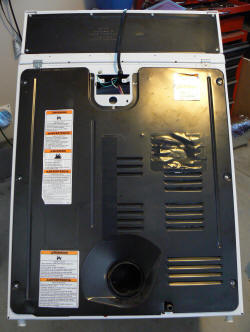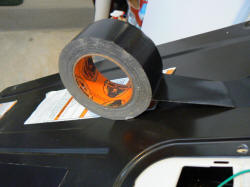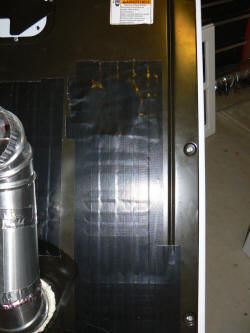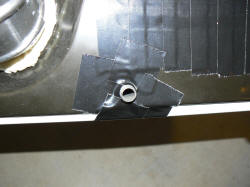
Search
The Renewable Energy site for Do-It-Yourselfers
Solar Clothes Dryer -- Dryer
Modification Method 1
Dryer Modification -- Method 1:
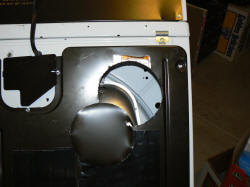
Cut opening in the back panel of the
dryer where the new 6 inch air
intake duct will provide solar heated air. |
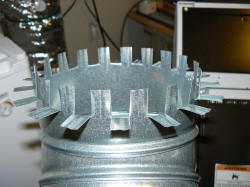
Preparing the duct for attachment to
the back of the dryer. The tabs are used
to anchor the duct in place in the new
hole in the back panel. |
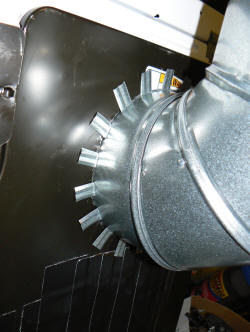
Duct in place on dryer back panel. |
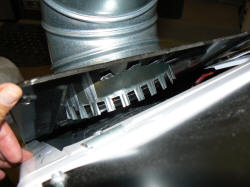 |
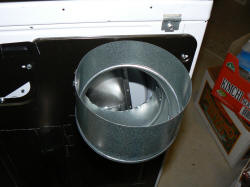
Ready to hook up the duct from the
solar attic collector. |
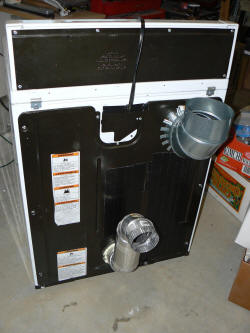 |
I used 6 inch as the intake to
the cabinet. Most all the air was vented thru the back. I used gorilla tape to
cover the grills. This was very easy to
do. Cutting the hole with tin snips went well. The back doesn't have to be
removed, I loosened it only to check for where to put the new vent and to bend
the tabs. The problem I originally had (method 2), with the dryer design and bypassing air
at the drum gasket is gone. The sealed cabinet stops the bypass. I can now run the dryer on sunny and rainy or cloudy days. Of
course the dryer will still draw air from the attic.
I was hoping that this method would eliminate the need for the blower on the
attic collector to provide a pressurized air source, but find that it is still
needed on this dryer. I think that on some dryers the blower
may not be needed, depending on the details of the dryer design.
Shorter ducts from collector to dryer will also lessen the need for the blower.
Still thinking about this change. After running several loads I find it
dries clothes about the same, 90 min. If you can only have one machine and
it's in the garage, then this is better. However, the cabinet now radiates
and blows heat, All seams and holes must be taped.
I suppose If the duct was large enough. The longer the duct, the larger
it would need to be. 8 ft. and 6inch, 10 ft. and 8 inch., and so on. Then a
fan may not be needed. The problem is the suction caused by the intake duct.
I have a filtered intake in the attic that increases the suction. I will add
a larger one soon. It look like the machine design depends on the bypass of
air for the intake. Maybe to take out heat, moisture, and exhaust coming
from the machine that could fill the room?
The issue of heat in the cabinet, with electric relays and motors? Only
time will tell.
My preference for now would be to have two dryers. One strictly solar
attic heat, the other unchanged for back up. In a pinch they could both be
run.







